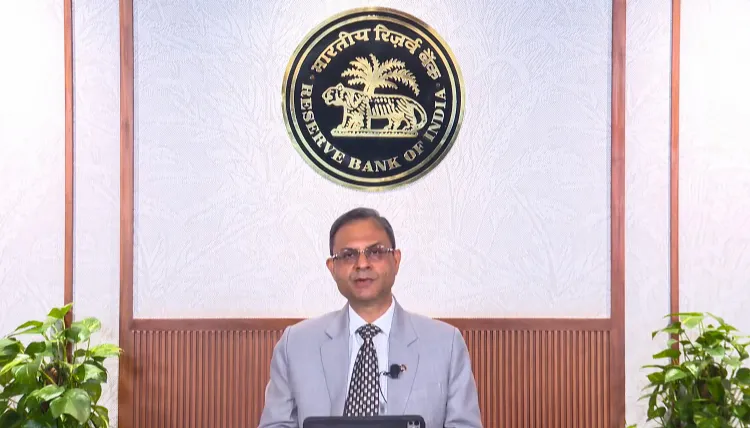Will the RBI Implement a Final 25 bps Rate Cut in December?

Synopsis
Key Takeaways
- Final 25 bps rate cut anticipated in December.
- Repo rate expected to reach 5.25 percent by end-2025.
- Inflation trends show signs of moderation.
- Core inflation remains high due to gold prices.
- Food prices have been in deflation for six months.
New Delhi, July 15 (NationPress) A report indicates that the Reserve Bank of India (RBI) is expected to announce a final 25 basis point rate cut during the December monetary policy committee (MPC) meeting, which would lower the repo rate to 5.25 percent by the conclusion of 2025.
In light of the recent moderation in inflation, the RBI may choose to maintain the repo rate in the upcoming two MPC meetings.
According to a report by HSBC Global Research, "We anticipate a pause in the August and October meetings. However, we believe that the RBI will execute a final 25bp rate cut in December, resulting in a repo rate of 5.25 percent by the end of 2025."
The June CPI Inflation was significantly below the market expectation of 2.3 percent, and the sequential trend has remained flat since April.
This current inflation situation is largely due to much lower-than-expected food inflation, which is likely to decline further.
The report noted, "The average inflation for the second quarter of 2025 was recorded at 2.7 percent, which is below the RBI's prediction of 2.9 percent."
Furthermore, the June WPI was also reported much lower than anticipated at -0.1 percent year-on-year, compared to the market expectation of +0.5 percent.
On a seasonally adjusted basis, wholesale prices have seen a month-on-month contraction of 0.5 percent, primarily driven by weak food prices that have remained in deflation since the start of 2025.
Food prices have now been in deflation for six consecutive months, decreasing 0.6 percent month-on-month. "The disinflation trend, which had been losing momentum recently, saw a reversal in the latest data," the report highlighted.
The decline in prices for pulses, vegetables, cereals, and spices is a major factor behind this weakness. In contrast, fruits and edible oil have experienced price increases during this period.
The report points out that the reduction in import duties from 20 percent to 10 percent (effective May 30) aimed at controlling domestic prices seems to have been neutralized by the rise in global edible oil prices.
Meanwhile, core inflation remains elevated due to increasing gold prices.
The price of gold, which constitutes 1.1 percent of the CPI basket, surged 36 percent year-on-year in June (up from 32.4 percent in May).
Moreover, inflation readings for July are trending below the 2 percent threshold, which the RBI considers to be its lower tolerance level, according to the report.









